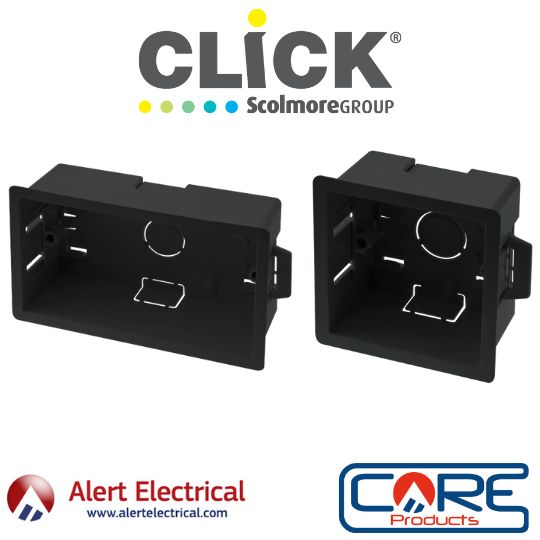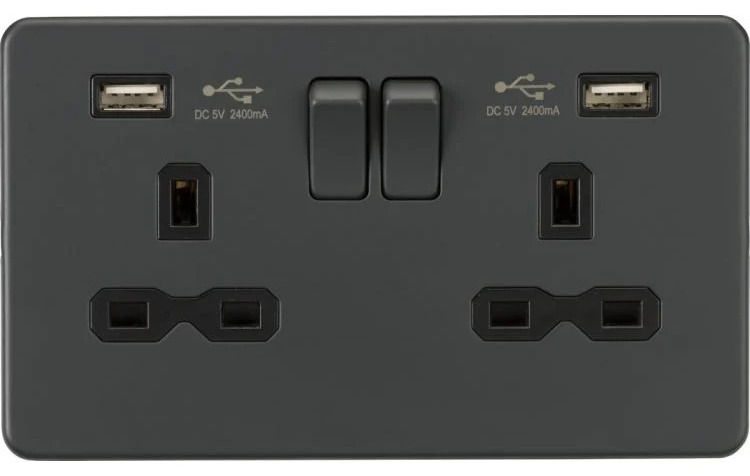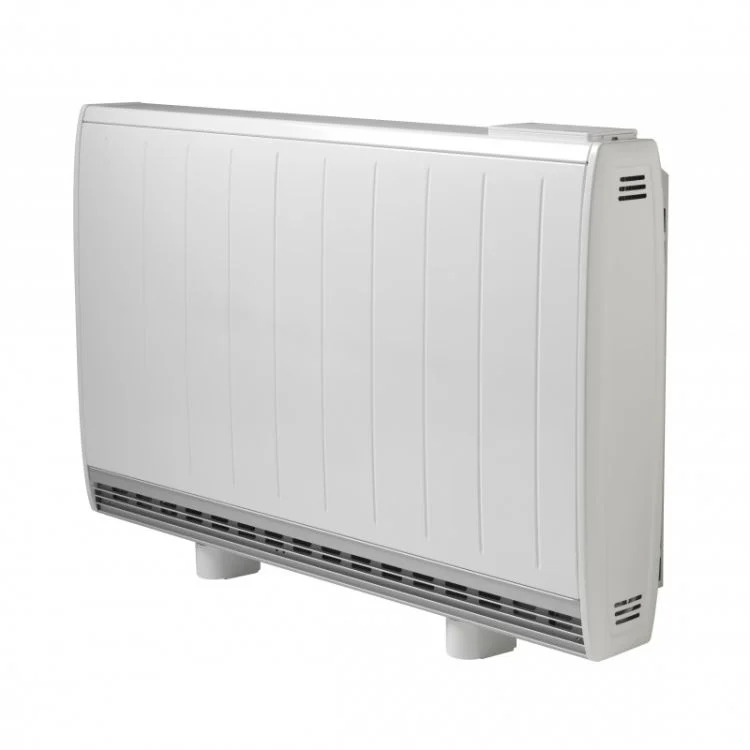IP Ratings Explained - what are they and why do they matter?

Making sure that your devices, fittings and anything electrical are compliant with rules and regulations is a very important part of owning/working on a home or commercial building. So whether you're the owner of the premises or an electrician taking on a job, you need to know exactly what IP ratings are and why they're important.
So what is an IP rating?
IP rating stands for ingress protection which measures the level of resistance a device has against solids and liquids. These ratings are set by the international standard EN 60529 (British BS EN 60529:1992). These standards define the levels of seal effectiveness and the higher the number, the better the ingress protection a device has.
IP ratings were originally established in 1976 by the IEC to help standardise the protection levels. They were provided with explanations and were referred to as characteristic letters. Today we have clear definitions of each IP rating to ensure we know what they mean and how they're categorised.
What do the numbers/digits in an IP rating mean?
As you may have seen, IP (ingress protection) ratings are made up of the letters IP and then usually two numbers following that. As mentioned, the higher the numbers are the better the protection that device has against foreign bodies such as dust and water.
You may see one of the numbers replaced with an X from time to time. This means that the device or the enclosure hasn't been rated for that kind of protection just yet. For example, a device might be labelled as IPX5 which tells us that the enclosure is able to protect the electronics inside from water jets from any direction. Whereas IP5X would suggest that the device is rated to protect against dust there is still a possibility that some particulates will get in as it's not completely dust-tight.
Solids protection - the first number - IP6X
So the first digital/number will refer to the level of protection that a device or enclosure has against solid matter. Things like hands and fingers, tools and even dust. Some or all of these solid items can be hazardous if they are able to come into contact with parts inside the device.
| Level sized | Effective against | Description |
| X | Unknown | X means no data is available to specify a protection rating about this criterion. |
| 0 | - | No protection against contact and ingress of objects |
| 1 | > 50mm | Any large surface of the body, such as the back of a hand, but no protection against deliberate contact with a body part |
| 2 | > 12.5mm | Fingers or similar objects |
| 3 | > 2.5mm | Tools, thick wires, etc. |
| 4 | > 1mm | Most wires, slender screws, large ants, etc. |
| 5 | Dust protected | Ingress of dust is not entirely prevented, but it must not enter in sufficient quantity to interfere with the safe operation of the equipment. |
| 6 | Dust-tight | No ingress of dust; complete protection against contact (dust-tight). A vacuum must be applied. Test duration of up to 8 hours based on airflow. |
Liquid protection - the second number - IPX6
The second number of an IP rating refers to the level of protection a device has against ingress from liquids. This can be drips, sprays of water from a shower or total submersion.
| Level | Protection against | Effective against | Details |
| X | Unknown | — | X means no data is available to specify a protection rating concerning these criteria. |
| 0 | None | — | No protection against ingress of water |
| 1 | Dripping water | Dripping water (vertically falling drops) shall have no unsafe effect on the specimen when mounted upright onto a turntable and rotated at 1 RPM. | Test duration: 10 minutes
Water equivalent to 1 mm (0.039 in) rainfall per minute |
| 2 | Dripping water when tilted at 15° | Vertically dripping water shall have no harmful effect when the enclosure is tilted at an angle of 15° from its normal position. A total of four positions are tested within two axes. | Test duration: 2.5 minutes for every direction of tilt (10 minutes total) Water equivalent to 3 mm (0.12 in) rainfall per minute |
| 3 | Spraying water | Water falling as a spray at any angle up to 60° from the vertical shall have no harmful effect, utilizing either: a) an oscillating fixture, or b) A spray nozzle with a counterbalanced shield.
Test a) is conducted for 5 minutes, then repeated with the specimen rotated horizontally by 90° for the second 5-minute test. Test b) is conducted (with a shield in place) for 5 minutes minimum. |
For a spray nozzle:
Test duration: 1 minute per square meter for at least 5 minutes Water volume: 10 litres per minute (0.037 impgal/s) Pressure: 50–150 kPa (7.3–21.8 psi) For an oscillating tube: Test duration: 10 minutes Water volume: 0.07 litres per minute (0.00026 impgal/s) per hole |
| 4 | Splashing of water | Water splashing against the enclosure from any direction shall have no harmful effect, utilizing either:
a) an oscillating fixture, or b) A spray nozzle with no shield. Test a) is conducted for 10 minutes. b) is conducted (without shield) for 5 minutes minimum. |
Oscillating tube: Test duration: 10 minutes, or spray nozzle (same as IPX3 spray nozzle with the shield removed) |
| 5 | Water jets | Water projected by a nozzle (6.3 mm (0.25 in)) against the enclosure from any direction shall have no harmful effects. | Test duration: 1 minute per square meter for at least 3 minutes
Water volume: 12.5 litres per minute Pressure: 30 kPa (4.4 psi) at a distance of 3 meters (9.8 ft) |
| 6 | Powerful water jets | Water projected in powerful jets (12.5 mm (0.49 in)) against the enclosure from any direction shall have no harmful effects. | Test duration: 1 minute per square meter for at least 3 minutes
Water volume: 100 litres per minute (0.37 impgal/s) Pressure: 100 kPa (15 psi) at a distance of 3 meters (9.8 ft) |
| 6K | Powerful water jets with increased pressure | Water projected in powerful jets (6.3 mm (0.25 in) nozzle) against the enclosure from any direction, under elevated pressure, shall have no harmful effects. Found in DIN 40050, and not IEC 60529. | Test duration: at least 3 minutes Water volume: 75 litres per minute (0.27 impgal/s) Pressure: 1,000 kPa (150 psi) at a distance of 3 meters (9.8 ft) |
| 7 | Immersion, up to 1 meter (3 ft 3 in) depth | Ingress of water in harmful quantity shall not be possible when the enclosure is immersed in water under defined conditions of pressure and time (up to 1 meter (3 ft 3 in) of submersion). | Test duration: 30 minutes.
Tested with the lowest point of the enclosure 1,000 mm (39 in) below the surface of the water, or the highest point 150 mm (5.9 in) below the surface, whichever is deeper. |
| 8 | Immersion, 1 meter (3 ft 3 in) or more depth | The equipment is suitable for continuous immersion in water under conditions which the manufacturer shall specify. However, with certain types of equipment, it can mean that water can enter but only so that it produces no harmful effects. The test depth and duration are expected to be greater than the requirements for IPx7, and other environmental effects may be added, such as temperature cycling before immersion. | Test duration: agreement with the manufacturer
Depth specified by the manufacturer, generally up to 3 meters (9.8 ft) |
| 9 | Powerful high-temperature water jets | Protected against close-range high-pressure, high-temperature spray downs.
Smaller specimens rotate slowly on a turntable from 4 specific angles. Larger specimens are mounted in the intended position when used, no turntable required, and are tested freehand for at least 3 minutes at a distance of 0.15–0.2 meters (5.9 in – 7.9 in). The specific requirements for the test nozzle are shown in figures 7, 8, & 9 of IEC (or EN) 60529. This test is identified as IPx9 in IEC 60529. |
Test duration: Fixture: 30 sec. in each of 4 angles (2 min. total), Freehand: 1 min/m2, 3 min. minimum
Water volume: 14–16 litres per minute (0.051–0.059 impgal/s) Pressure: 8–10 MPa (80–100 bar) at a distance of 0.10–0.15 meters (3.9 in – 5.9 in) Water temperature: 80 °C (176 °F) |
Additional information - the third digit - IP65X
Sometimes you'll see that an IP rating has 3 digits, this will come in the form of two numbers and a letter at the end. This letter will define additional information.
| Letter | Meaning |
| D | Wire |
| F | Oil resistant |
| H | High voltage apparatus |
| M | Motion during water test |
| S | Stationary during water test |
| W | Certain weather conditions |
Tables and IP rating explanations sourced from Wikipedia









